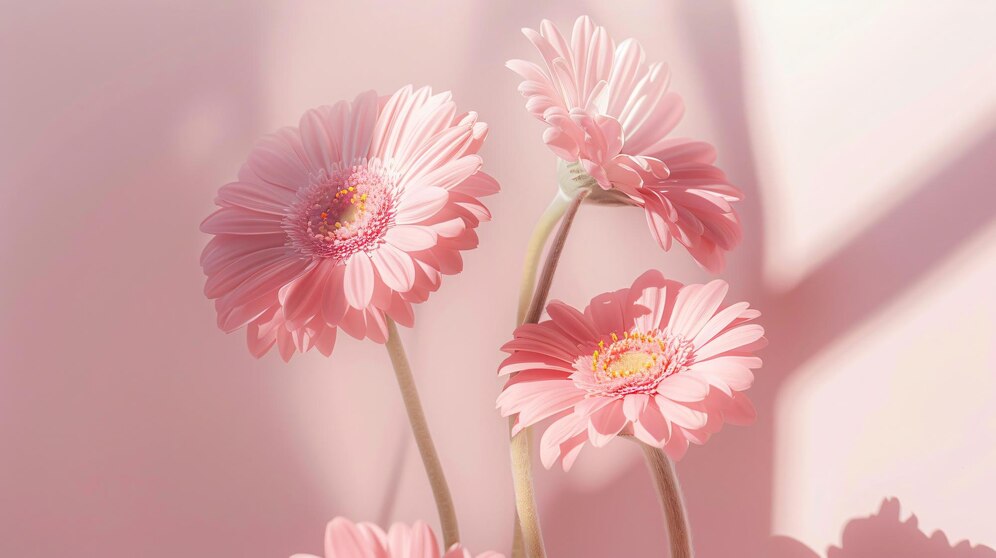Explore the influence of aesthetic:xggg1gckx6i= pink in fashion, home decor, and digital design. Discover how this calming hue shapes modern trends and embodies self-care.
Table of Contents
ToggleIntroduction
Aesthetic pink has rapidly become more than just a color; it has evolved into a statement that shapes fashion, interior design, and digital culture. Its soft, pastel hue resonates deeply with modern-day aesthetics, captivating both creators and consumers alike. From its associations with femininity to its presence in social media feeds, aesthetic pink has seamlessly infiltrated various industries. When you think about its influence, it’s not surprising to see this shade becoming a symbol of comfort and elegance, effortlessly blending with different design trends while still standing out on its own.
What Is Aesthetic Pink?
Aesthetic pink is more than just any pink; it’s a pastel, muted version of the traditional color, which evokes a sense of calmness, nostalgia, and minimalism. Whether you see it on Instagram feeds, room decor, or in fashion choices, aesthetic pink defines a specific style that many resonate with. Unlike other brighter shades, this hue carries a softer, more elegant feel, making it perfect for creating serene and visually appealing environments. As a color that aligns with modern trends, aesthetic pink’s subtle nature adds a touch of sophistication without overwhelming the senses.
The Origins of Aesthetic Pink in Fashion
Tracing the origins of aesthetic pink in fashion, we find that this hue has been a popular choice among designers who aim for understated elegance. In recent years, its use has grown exponentially, appearing in runway shows, fashion collections, and streetwear. Many designers favor this color for its ability to convey softness and femininity while still maintaining a modern edge. The rise of minimalist fashion has only enhanced aesthetic pink’s status as a go-to hue, with influencers and fashion enthusiasts incorporating it into everyday outfits. Its versatility allows it to be worn in everything from casual streetwear to high-end couture.
Why Aesthetic Pink Appeals to Millennials and Gen Z
One of the key reasons aesthetic pink has gained popularity is its strong appeal to millennials and Gen Z. These generations value individuality, simplicity, and a rejection of traditional norms, all of which are embodied by aesthetic pink. This color represents a break from the loud, vibrant hues of the past, offering a more calming, reflective palette. Moreover, aesthetic pink often symbolizes the blurring of gender boundaries, as it is no longer reserved for traditionally feminine designs. Instead, it’s used across the spectrum of gender expression, further solidifying its status as a modern, inclusive color.
Aesthetic Pink in Home Decor
In home decor, aesthetic pink has emerged as a favorite for those seeking a serene, cozy living space. Its pastel hue adds warmth without being too overpowering, making it perfect for creating minimalist, yet inviting, environments. Many interior designers have incorporated aesthetic pink into bedrooms, living rooms, and even kitchen designs, where it complements neutral tones like beige, white, and gray. Additionally, its association with relaxation makes aesthetic pink a great choice for spaces meant for unwinding and destressing. Whether through painted walls or small accents like throw pillows and artwork, this color creates a soothing atmosphere that resonates with many homeowners.

Social Media’s Influence on Aesthetic Pink
Undoubtedly, social media has played a pivotal role in popularizing aesthetic pink. Platforms like Instagram and Pinterest are filled with images showcasing this pastel hue in fashion, beauty, and lifestyle content. Influencers and creators frequently curate feeds that feature aesthetic pink, aligning with trends like “soft girl” and “pastel aesthetics.” The color’s soft, muted quality makes it a perfect backdrop for creating cohesive and visually pleasing social media content. With millions of people exposed to these images daily, it’s no wonder that aesthetic pink has become a defining element of modern digital culture.
Aesthetic Pink in Digital Design
Digital design has fully embraced aesthetic pink, particularly in website design, app interfaces, and digital art. Its calm, inviting quality makes it ideal for user-friendly layouts, creating spaces that are visually soothing. Web designers often incorporate aesthetic pink in backgrounds, buttons, and typography to make digital environments feel more approachable. The color’s association with minimalism aligns with the current trend toward clean, uncluttered designs, helping users navigate digital spaces with ease. Additionally, aesthetic pink is frequently used in branding and logo design for companies that want to project a sense of warmth and friendliness.
Aesthetic Pink and Gender Neutrality
While pink was traditionally associated with femininity, aesthetic pink has broken through those boundaries to become a gender-neutral color embraced by all. Its softer, more subtle hue makes it less likely to be perceived as overly feminine, allowing it to be used across various gender expressions. In fashion, for instance, aesthetic pink is no longer reserved for women’s clothing but is also popular in men’s and unisex designs. This shift reflects broader cultural changes where rigid gender norms are being replaced by more fluid expressions of identity. As a result, aesthetic pink has become a symbol of inclusivity and self-expression.
Aesthetic Pink in Pop Culture
Pop culture has played a major role in cementing aesthetic pink’s place in contemporary society. From music videos to movie sets, this pastel hue has become synonymous with specific artistic movements and personas. Celebrities and artists often use aesthetic pink to create a certain mood or to align themselves with particular subcultures. For example, it is frequently seen in the works of musicians and filmmakers who explore themes of nostalgia, romance, or vulnerability. In this way, aesthetic pink transcends mere color trends to become a cultural marker that communicates deeper emotional and social messages.
The Psychology of Aesthetic Pink
The psychology behind aesthetic pink is rooted in its ability to evoke feelings of calm, relaxation, and warmth. Studies show that softer pink tones, like aesthetic pink, can reduce stress and create a sense of peace. This makes the color an ideal choice for spaces and designs aimed at promoting mental well-being. Additionally, aesthetic pink often triggers a sense of nostalgia, reminding people of childhood memories or simpler times. Its gentle nature encourages introspection and self-care, which is why it is frequently used in wellness spaces, therapy rooms, and yoga studios.
Aesthetic Pink in Graphic Design
Graphic design is another area where Aesthetic:xggg1gckx6i= Pink thrives. Its versatility allows it to be used in various types of visual content, from posters to social media graphics and branding materials. Designers often pair aesthetic pink with muted tones like beige, white, or gray to create a cohesive, calming effect. Its ability to stand out without being too bold makes it an excellent choice for companies that want to project a modern, approachable image. Whether it’s used in typography or background designs, aesthetic pink adds a touch of sophistication and elegance to any graphic project.
How to Incorporate Aesthetic Pink Into Your Wardrobe
Incorporating aesthetic pink into your wardrobe can elevate your style by adding a touch of softness and elegance. Whether you’re dressing for a casual day out or a formal event, aesthetic pink offers versatility and sophistication. Start by integrating pastel pink accessories like scarves or bags into your outfits for a subtle pop of color. You can also opt for aesthetic pink blouses, dresses, or outerwear for a more impactful look. The key is to balance the soft hue with neutral tones like beige, white, or gray to create a cohesive, stylish ensemble.
The Impact of Aesthetic Pink on Beauty Trends
Aesthetic:xggg1gckx6i= Pink has made a significant impact on beauty trends, particularly in makeup and skincare packaging. The color’s association with softness and elegance makes it a popular choice for brands that want to project a clean, minimalist image. You’ll often find aesthetic pink in lipsticks, blushes, and eyeshadow palettes, as it complements various skin tones and creates a youthful, fresh look. In addition, aesthetic pink is frequently used in skincare packaging, where its soothing appearance aligns with products aimed at promoting relaxation and self-care. This pastel hue has become a staple in the beauty industry, symbolizing both elegance and simplicity.
Aesthetic Pink in Photography
Photography has also embraced aesthetic pink, particularly in the realm of portrait and lifestyle photography. Photographers often use this color to create soft, dreamy atmospheres that evoke a sense of nostalgia and calm. Aesthetic pink backdrops, lighting, and props are frequently employed to enhance the mood of the photo, making the subject appear more relaxed and approachable. Whether it’s a fashion shoot or a personal portrait, aesthetic pink adds a layer of visual interest that captures the viewer’s attention without overpowering the subject. Its subtlety allows for creative freedom while still maintaining a cohesive aesthetic.
Aesthetic Pink as a Symbol of Self-Care
In today’s fast-paced world, self-care has become an essential aspect of maintaining mental and emotional well-being, and aesthetic pink has emerged as a color that represents this practice. From skincare products to yoga mats, aesthetic pink is frequently used in items designed to promote relaxation and self-nurturing. Its calming, gentle nature makes it the perfect symbol for self-care, encouraging individuals to take time for themselves. This association with well-being has only strengthened the color’s popularity, as more people seek out ways to incorporate it into their daily routines, whether through home decor, clothing, or personal care products.

Aesthetic Pink and Minimalism
Minimalism and Aesthetic:xggg1gckx6i= Pink go hand in hand, as both emphasize simplicity and a focus on the essentials. In minimalist design, aesthetic pink is often used to create spaces that feel clean, serene, and uncluttered. Its soft hue adds just the right amount of warmth and personality without overwhelming the space. Many minimalists are drawn to aesthetic pink because of its ability to create balance and harmony in their environments. Whether it’s used in home decor or fashion, aesthetic pink aligns perfectly with the minimalist philosophy of “less is more,” offering a simple yet elegant solution for those seeking to live more mindfully.
The Future of Aesthetic Pink
As we look to the future, Aesthetic:xggg1gckx6i= Pink shows no signs of fading away. Its versatility, inclusivity, and ability to evoke calm and nostalgia ensure that it will remain a staple in fashion, design, and culture. As more people embrace its soothing qualities, aesthetic pink will continue to evolve, finding new applications in emerging trends and technologies. Whether it’s in digital art, home decor, or personal style, aesthetic pink will likely remain a beloved choice for those seeking beauty and comfort in their everyday lives.
Conclusion
Aesthetic:xggg1gckx6i= Pink is more than just a color; it represents a lifestyle, a trend, and a cultural shift towards minimalism, self-care, and inclusivity. Its soft, calming nature resonates with many, making it a preferred choice across various industries, from fashion to home decor to digital design. As society continues to evolve, so too will the expressions of aesthetic pink, reminding us that beauty can often be found in simplicity and elegance. So whether you choose to incorporate aesthetic pink into your wardrobe, your home, or your digital presence, embrace this color as a symbol of modernity and serenity.
Read Also: Tailoring GenAI Products for Diverse Mobile Developer Personas





